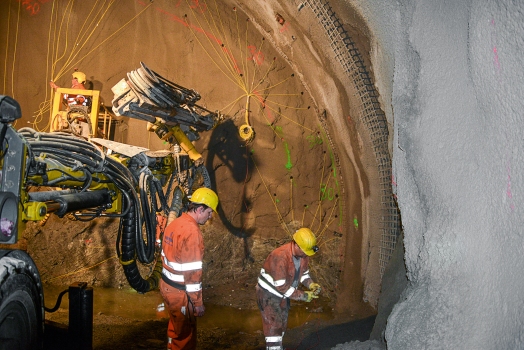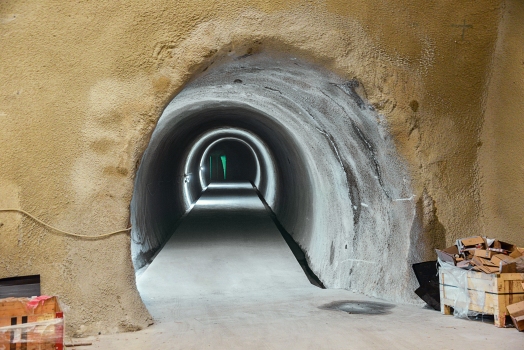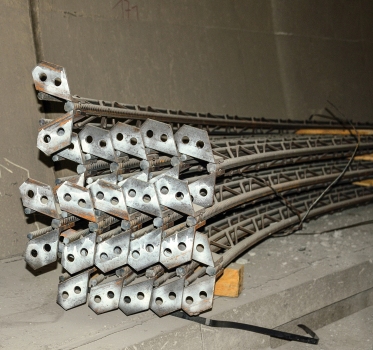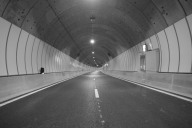The Arlberg Tunnel – Austria’s longest road tunnel
The single tube Arlberg Tunnel is the only east-west connection between Tyrol and Vorarlberg that can be used year-round. With 13,972 m, it is Austria's longest road tunnel and crosses the Arlberg Mountain at a maximum depth of 850 m.
Media
Opened in 1978, the tunnel will now have to be adapted to the requirements of the road tunnel safety law (STSG) before the end of 2019 with regards to escape routes and lay-bys. The new safety concept includes the posterior construction of eight lay-bys, a new crosscut to the existing escape and rescue route and escape routes at maximum distances of 500 m to each other. In addition to the existing escape and rescue routes, 37 new galleries in lengths of 42 to 134 m will have to be advanced. Most of these will lead from the drivable part of the tunnel into the inlet air canal in a semicircle that can be used as a staircase.
Furthermore, within the scope of the comprehensive repair program, aquiferous cracks will be sealed, the sealing of the interior lining will be renewed and the exposed concrete in the galleries will be comprehensively repaired. In addition, three service rooms for the electrical equipment and the transformers in the tunnel will have to be built, and a sprayer system will be installed in order to reduce the temperature at possible fire sources even before the arrival of the fire department. The road tunnel was fully closed for several months during rehabilitation.
Strong tektonization with several fault zones
The Arlberg Tunnel is located in a phyllite gneiss zone at the northern rim of the Silvretta Massif. The rock strata near the planned escape galleries are characterized by strong tektonization with several fault zones so that ground support products were necessary for excavation.
To advance the new escape routes and the additional crosscut, DSI Austria produced and supplied 240 kN OMEGA-BOLT® Expandable Friction Bolts with anchor plates and sleeve tubes; Type SN25-250 Anchors with special ALWAGRIP rib geometry with anchor plates as well as the DYWI® Drill Hollow Bar System with couplers, cross drill bits and button drill bits. In addition, DSI Austria also supplied the necessary BST 550 steel spiles in lengths of 3 m; R32, 3 m long self-drilling spiles and PANTEX Lattice Girders.







